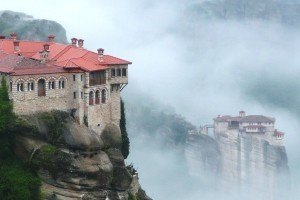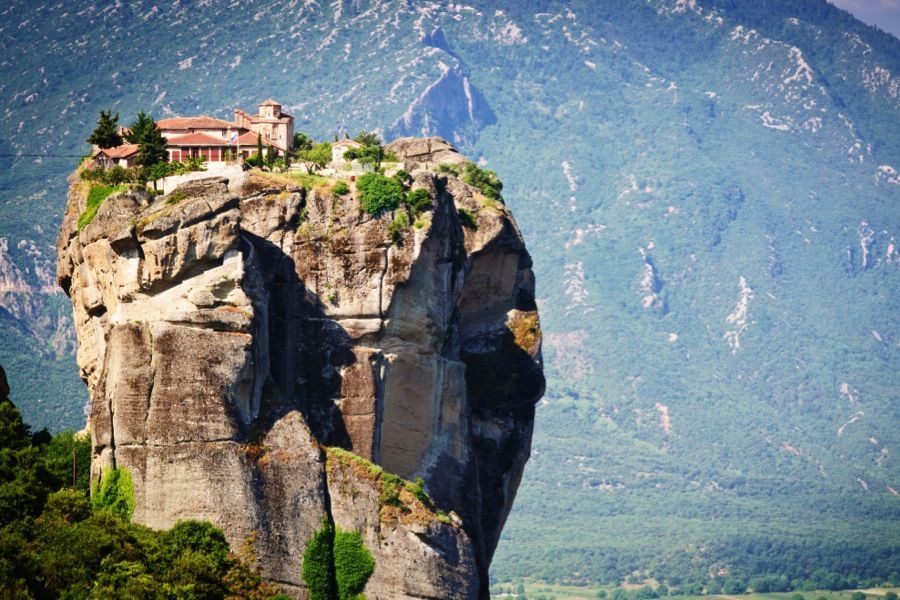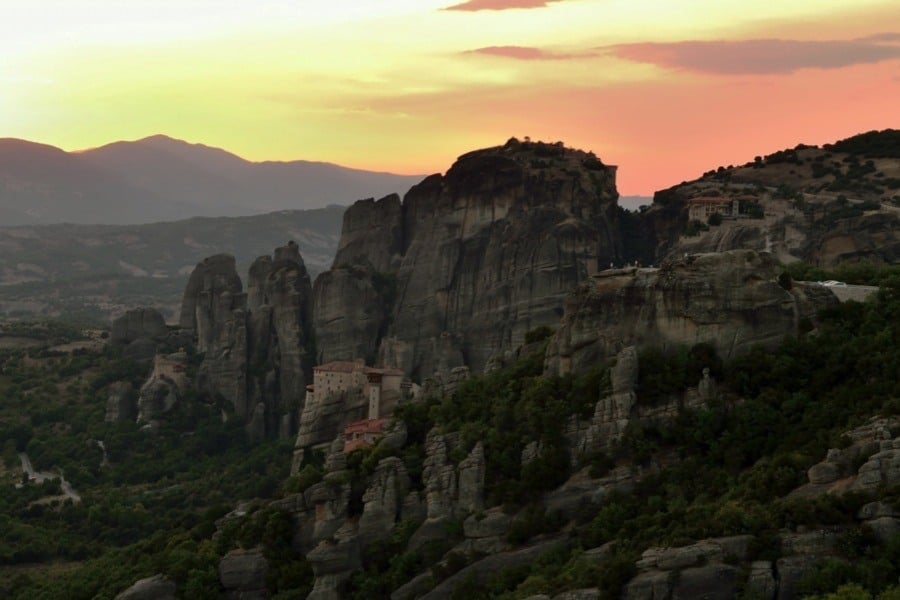

Source: Flickr
Take a four-hour drive north of Athens to the region of Thessaly, and you’ll see dozens of massive outcroppings of rock rise into the clouds. For nearly a thousand years, spiritual seekers and monastics have sought to link their lives to the divine by climbing atop these 400-meter-high platforms of stone.
This is Meteora. In Greek, the word means, roughly, midair. It is an etymological second cousin twice-removed of the English word, meteor. And Meteora does seem to hang in the sky. Clouds often fill the valley of the Pineios River below, and the tips of the mountains seem to float on top of the fog like ships in a harbor.

Source: Flickr
Sometime between the 9th and 11th centuries, Christian ascetics and clergy began to gather here. They lived in the caves on the sides of the rock towers. In the 12th century, a group built a church at the base of one of the formations. It is still standing, though the structures that won Meteora recognition as a UNESCO World Heritage Site in 1988 are those in the heights.
There are six still-active mountaintop monasteries at Meteora. One of them, the Great Meteoron, also known as the Church of the Transfiguration, has achieved a sort of triple crown among its peers: it is oldest, the largest, and the highest of the holy sites in this foggy dreamscape. The marvels of Meteora also include the rich collections of Byzantine treasures, ornate wooden crosses, and religious icons in such monasteries as Varlaam, Roussanou, and Agios Nikolaos Anapafsas.

Source: Flickr
To build these monasteries in the 14th, 15th, and 16th centuries, the monks employed a system of ropes, nets, baskets and pulleys. They hoisted up supplies—and each other—manually. There’s an old joke about what monks would tell inquisitive visitors worried about riding up in a basket:
“How often do you replace the ropes?” asks the visitor.
“Whenever they break,” answers the monk.
The process that created the Meteora outcroppings is not perfectly understood, but scientists date these strange formations to 60 million years ago. Humans moved in around maybe 50,000 years ago. Tens of millennia later, spiritual peregrines returned to this mysterious place to seek the face of God. Today, the tourists come to get a glimpse of that cloudy past.
The post Meteora, Greece: Where The Monks Pray In The Clouds appeared first on All That Is Interesting.